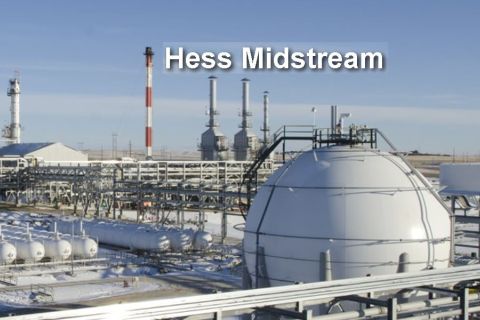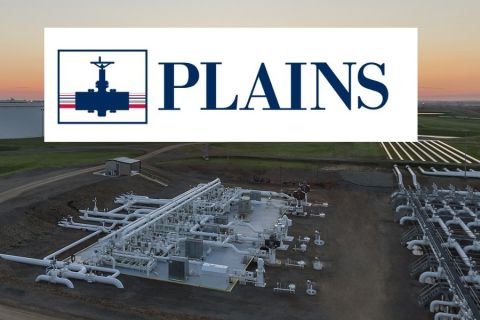All roads up a mountain lead to the top, so goes the old expression, but some are steeper or more circuitous than others.
In taking the long view of the transport and processing capacity that will be necessary to bring the full bounty of unconventional development to market, it has been vogue among analysts and some industry sources of the North American midstream sector to sketch some highly daunting numbers for the replumbing of the continent.
In announcing planned growth capital expenditures for 2014, however, operators themselves are making it clear they will not be stampeded into more spending and building than they can justify in the near term.
To be sure, there are plenty of 10-digit numbers for 2014 capex, showing that industry is hardly skimping. During his earnings call in November, Harry Pefanis, president of Plains All American, said, “our preliminary capital program for 2014 totals approximately $1.3 to $1.5 billion. Our bias is definitely to the upper end of the range as we have a number of projects in the Permian basin that are being advanced but not yet finalized.”
For 2014, ONEOK Partners’ capital expenditures are expected to be approximately $2.25 billion, the company says, comprising approximately $2.1 billion in growth capital. That is out of a stated total of $6 to $6.4 billion of growth projects between 2010 and 2016 and $144 million in maintenance capital.
Peers and trends
Similar trends show up in a quick survey of some of ONEOK’s peers. Growth capex for this year at Energy Transfer Partners will be $2.1 to $2.7 billion, the company says, adding that the primary projects are the Lone Star natural gas liquids (NGL) line on Mariner South at the Mont Belvieu, Texas, hub, including NGL storage; Sunoco’s Mariner West, East and South lines exporting ethane, propane and butane; gathering and processing expansions in the Eagle Ford and Permian basin; expanding header systems on transmission lines to serve new emerging markets along the Gulf Coast and Mexico; the Eastern Gulf Crude Access (EGCA) Trunkline 30- inch conversion to crude to move oil from the Midwest to East Gulf Coast refineries; the Rio Bravo HPL natural gas pipeline conversion to crude in the Eagle Ford to Corpus Christi, Texas; and the Lake Charles, Louisiana, liquefied natural gas (LNG) export development with BG Group.
At Williams, 2014 expected capex tops out at $4.85 billion.
For a midsized operator, Access Midstream is running with the big dogs at a 2014 capex of $1.1 to $1.2 billion, which Dave Shiels, chief financial officer, says is quite sufficient. “Our guidance is at a very high level,” he states. “Our capex for ’14 is a little less than ’13, but in line with our run rate, so we don’t anticipate much change. We have large teams working on large projects and that is going to stay consistent. Our capex is going to be in line with our volumes and earnings, basin by basin.”
The Utica is the largest development for Access, and Shiels agrees with the analysts that “much more is clearly needed in the midstream in the Utica and around the country. We are working fast and furious to get that done. Pipe infrastructure is critical to our Cardinal joint venture, but 2014 is all about connections. We have a backlog of wells waiting on connections in the Utica and the Marcellus.”
While acknowledging strategic long-term needs across the industry and across the country, Shiels concludes, “our goal is delighting our customers. It has been difficult for the midstream to keep up with drilling in the Utica, Marcellus and Eagle Ford, so that is a priority for this year.”
A tone of urgency
Since the shale bonanza burst onto center stage, there have been many comprehensive reports suggesting giddy—or ominous—needs for midstream investment to get the multitude of molecules to market. One example was from within the industry, a widely read and discussed report from 2011 by the Interstate Natural Gas Association of America (INGAA) Foundation entitled, “North American Natural Gas Midstream Infrastructure Through 2035: A Secure Energy Future.”
That report stated plainly that, “new infrastructure will be required to move natural gas from the regions where production is expected to grow and to areas where demand is expected to increase. The reference case projects that more than 43 billion cubic feet (Bcf) per day of incremental mainline capacity will be needed from 2010 to 2035. In addition to the new mainline transmission capacity, pipeline laterals will be required to connect new power plants, new gas storage fields and new gas processing facilities to the network of natural gas transmission pipelines.”
The INGAA projection added, “new gathering system capacity also will be required to connect new producing wells to processing facilities and pipelines. The cost of new natural gas transmission infrastructure, including gas storage and lateral connections, needed over the next 25 years is projected to average approximately $5.7 billion per year, or more than $141.7 billion total. Gathering and processing adds an additional $2.6 billion per year on average or about $64 billion total. The gas transmission mainline category is projected to account for approximately half of the total capital required for midstream natural gas infrastructure in this study.”
At press time, INGAA said it was in the final stages of updating the 2011 report to reflect infrastructure investments already made and planned, but also revised and expanded production numbers and projections as well as demand expectations. The revised report is expected in the first quarter of this year, but INGAA could not provide any preliminary findings.
Once bitten
Teri Viswanath, director of commodity analysis at BNP Paribas, concurs that the U.S. midstream sector has a major challenge in both providing new processing and transport capacity, and even more so upgrading and even replacing a large part of the existing infrastructure. She also has some insight to the industry’s circumspect response to the clarion call for huge long-term investment programs. In essence, once bitten, twice shy.
“The U.S. is just coming off one of the largest buildouts of transportation pipeline in many years,” Viswanath tells Midstream Business, “but that huge pipe push was mostly southwest-to-northeast, as well as some other inter-regional trunk lines. Now it turns out that a lot of that pipe was put in the wrong place for the production growth that has taken place.”
That reality has two implications:
• First, both operators and investors make a priority of keeping a clean balance sheet, especially with some increase in interest rates anticipated in the not-toodistant future. As a result, operators need to focus on cash flow and operational efficiency to pay down their sunk investments before they can start making new grand plans.
• Second, there is a natural hesitation among boards of directors and large investors to sally forth on another capital campaign after the last one is ending with lingering open seasons.
“But the problem is that some of that is in the wrong place. The bigger story is the aging infrastructure. About half of the U.S. pipeline network, from gathering to transmission, was built in the 1950’s and ‘60’s. We literally need to replace cast iron with steel,” Viswanath adds.
She cites data from the U.S. Department of Transportation that as much as 85% of the pipeline infrastructure in five key states—New York, New Jersey, Pennsylvania, Massachusetts and Michigan—may need to be replaced. “We all remember the horrific disaster in San Bruno, California,” she adds. “If we are going to make the most of our new shale economy as a country, we have to get the gas from where it is to where it needs to be, and get it there safely.”
One bright spot that Viswanath anticipates is that “lots of the existing transmission contracts are set to expire in 2015 that is now just next year. That will allow all parties, producers and midstream operators, to get back into the market and to follow the plays as they develop. In 2016-18, there is likely to be an increase in construction as more money is spent on the nation’s transportation grid.”
One prime example of the scale of project that is in favor these days is the 120-mile Agua Dulce Pipeline that will carry natural gas from its eponymous Texas town just west of Corpus Christi to the U.S.-Mexico border, interconnecting on the Mexican side of the border with phase one of the Los Ramones Pipeline, which is being developed by Pemex Gasoductos de Chihuahua. The project’s owners are NET Midstream and ArcLight Capital Partners.
South of the border
When operational by the end of this year, the pipeline is expected to transport more than 2 Bcf per day into Mexico. MGI Supply Ltd., an indirect wholly owned subsidiary of Pemex Gas y Petroquímica Básica, has agreed to purchase this capacity pursuant to a long-term firm gas transportation agreement. Financing of $665 million came from a lender group including The Bank of Tokyo Mitsubishi UFJ/Union Bank, BBVA/Compass, Crédit Agricole, ING Capital, Natixis, Nord/LB; Royal Bank of Canada and Santander, and the lenders were advised by the law firm Milbank, Tweed, Hadley & McCloy, based in New York.
“This project was very neat and tidy,” Dan Michalchuk, Milbank project finance partner, tells Midstream Business. “One of the reasons it got done in the conventional banking sector is that it had everything traditional lenders seek, especially a stable off-take agreement. It was pretty straight forward once the land rights were secured. The development was very linear. We will be seeing more deals like this in size and structure in the midstream sector this year and in coming years.”
The new frontier
With so much gas being produced, and an embarrassing amount still being flared in some basins, it can be difficult for producers to see light at the end of the pipe in terms of demand growth. But the Agua Dulce project is an apt microcosm for the reality that low prices do stimulate demand for all the new gas: it will be carrying export gas— literally the new frontier in demand growth, and that exported gas will be used for power generation in Mexico. That mirrors a huge bump in consumption domestically as well.
“The new president in Mexico is trying to reform its energy sector to allow more direct foreign investment,” says Michalchuk. “It is controversial and has been tried before, but this time it looks like it is going to stick. Even if it does, it will take time, and Mexico needs gas now for its power sector. It should be easy to attract lenders and investors. We are also seeing more interest in petrochemical investments.”
Back on the U.S. side of the border, Michalchuk suggests that “project economics for initiatives like Agua Dulce is very attractive to certain lenders and investors, and we will be seeing more opportunities like that. Some will have different structures in debt and equity as well as different risk levels, but they will all have the sound market fundamentals. That often includes hedging to mitigate risk.”
Milbank has been involved in project financing for 13 years, so he has seen the midstream sector through several commodity and financial cycles. He says the firm usually represented lenders, but also plan sponsors.
“We are seeing more sponsor-representation opportunities lately, especially downstream in processing and petrochemicals. Those tend to start earlier with the drafting of off-take agreements,” he adds.
Overall, he observes a quickening as neat projects of manageable size are brought forward. “It has taken a while for projects to gain traction, but now we are at a time when the groundwork that project sponsors have put in is starting to come to fruition. It is really a great time for the industry.”
Midstream maturity
John England, vice chair and oil and gas leader for Deloitte’s Center for Energy Solutions, concurs. “The midstream industry had reached a state of maturity,” he tells Midstream Business. “There was a general expectation of a decline in production. Now the industry is challenged to get all this new shale gas and tight oil to market. There is an unprecedented amount of capital flowing into the upstream sector that honestly no one in that sector or in the midstream saw coming. As recently as the late 2000s, all people were planning was how to get gas from the Gulf Coast to the East Coast, and how to get gas from the Rockies to anywhere.”
Late last year Deloitte released a multiclient study with the unabashedly optimistic title, “The Rise Of The Midstream Shale Reinvigorates Midstream Growth.”
That is not to say, however, that everything is great everywhere. “The economics are very tough in the Bakken,” adds England. “Producers there have got to find markets,” he explains, but the challenge is that “as prices rise, and it becomes more economical to build in, or build out to get that stranded gas to market, the competition rises elsewhere, too. One positive thing is that we are starting to see gas used as a fuel right there in the basin. The hope is that the region itself will consume more.”
Flaring in the Bakken notwithstanding, England says that the overall capital response in the midstream sector has been to emphasize the basics.
“Gathering and processing has really been stressed by the upstream sector. They want to get drilling, and the only way to do that is to move volumes. So upstream is moving into the midstream as a means to an end. They build, then sell to the master limited partnerships (MLPs). Private equity still prefers the upstream, because they see clearer and more numerous exit strategies,” he says.
Completing the circuit
It might seem a bit far afield for capex discussions to turn to public and private markets, but England explains that capital is like electricity: It needs to complete a circuit. Capex investments by midstream operators have to generate sufficient returns on their own or be sufficiently attractive to investors at some level.
One group of potential participants that has been conspicuous by its absence is the international market. Considering the billions of dollars poured into the unconventional upstream sector by national oil companies and other offshore investors, the same has not been true in the midstream.
That is not likely to change anytime soon, England suggests.
“The established midstream MLPs are still in favor and have done very well for investors. Offshore buyers of hydrocarbons are taking big offtake positions from producers, but so far are not taking equity positions in upstream or midstream. So the building will continue to be done by the big U.S. midstream guys,” he says.
In the same spirit, England adds, “I also don’t see the big midstream guys going international—except of course for Canada and maybe even Mexico if reform actually takes hold there. But I don’t see them going offshore.” There are just too many lower-risk, higher-return opportunities close to home, he explains.
Not just for retail
In reflecting on the recent Deloitte study, England adds a note about investment interest in the midstream. “When we started this project, we were looking primarily at retail investors. I did not realize how much institutional investor demand there was for the midstream, particularly MLPs. Now that the report is out, I am even more confident that the institutional investor has strong interest in the midstream.”
Underscoring that assertion that the midstream sector is being a little cautious now after coming off a spending spree, the Deloitte study found that during 2006–2012, midstream companies invested almost twice the amount of capital they did between 1992 and 2006, thereby increasing the sector’s capex intensity relative to that of upstream companies.
That investment has been acknowledged by the market, reflected in a threefold increase in midstream companies’ share of total U.S. oil and gas company enterprise value since 2005.
The rise of the midstream sector is illustrated by the increase in its company valuations. Nearly 25 midstream companies have an enterprise value in excess of $5 billion, up from seven companies in 2006. The midstream sector is now the third-largest sector of the U.S. oil and gas industry, behind super majors and large independents. The largest midstream company, Kinder Morgan, with an enterprise value of $110 billion, is the thirdlargest energy company in North America, behind two super-major oil and gas companies.
Still behind the production curve
Despite that rise in its capital intensity, the Deloitte report confirms that the sector is just beginning to meet the needs of exploration and production (E&P) companies in areas like the Bakken.
“According to 2011 data from the U.S. Energy Information Administration (EIA), the latest available at the time of publication, about 35% of the Bakken gas production had to be flared or was otherwise not marketed because of the insufficiency in the infrastructure required to store or transport it,” England says.
In South Texas’ Eagle Ford Shale, production is exceeding pipeline and storage capacity. Rail shipments are on the rise due to the current lack of pipelines, Deloitte reports. “Because of tight pipeline capacity, the use of rail, truck and barge to move crude nationwide is at its highest since the government began keeping records in 1981. Meeting these growing infrastructure needs may require more than $200 billion in additional investment by 2035.”
The sum of those growth determinants provides an estimate of the midstream sector’s market size, which amounted to nearly 14.5 billion barrels of oil equivalent (bboe) in 2012. According to that summation, which Deloitte based on EIA’s projections for oil prices under three cases—reference, high and low—crude oil and NGLs will drive the sector’s high growth until 2016 and increase the sector’s market size to 15.5 bboe.
The sector will then likely enter a transition phase where depletion of oil’s sweet spots will coincide with the reignition of gas growth, Deloitte anticipates. “In this phase, recovery in natural gas prices, the commencement of LNG exports and increased demand from gas-powered industrial sectors will drive the growth of the midstream sector. Concurrently, NGLs will grow faster than any other commodity due to the start-up of new petrochemical plants and NGLs’ significant export potential, mostly for propane.”
External capital
To fund and build the local and national system of pipelines, midstream companies depend heavily on external capital, as they distribute much of the cash flow they generate to investors as MLPs. Since 2008, more than 95% of the sector’s capex and acquisitions have been funded through equity and debt, Deloitte says.
Thus, the midstream sector relies on two sources for early-stage funding: E&P company build-outs and private equity (PE) financing. In the build-out scenario, a producer pays for the small-scale local infrastructure, such as the feeder and gathering and processing systems, to handle production from its wells. Once the wells begin producing, the E&P company looks for a midstream buyer for the assets.
PE serves a similar role in funding the construction of gathering systems and large-scale national infrastructure, including interstate or long-haul pipelines. After the midstream investment gains critical mass, PE investors often seek an exit through an initial public offering (IPO) or sale to an existing midstream company. Companies financed through this process have higher exit multiples than do other PE investments because of the unique nature of their IPOs.
Public investors buying into an offering, however, are typically wary of early-stage investors who sell more than half their stake in a company. To ease this common concern, some PE firms hold onto their investments longer than their normal duration. They do still, however, have the option of selling their assets to a strategic buyer in order to make a complete exit. As noted by operators and other industry analysts, another factor lurking behind investment decisions is the outlook for rising interest rates.
One further factor keeping some capex budgets in check is that the midstream sector is highly fragmented.
Deloitte details that “among the current midstream companies, large-cap diversified players have the lowest weighted-average cost of capital, at less than 6.5%. Midsized companies have the highest, at more than 7%.
Companies with less than $5 billion in enterprise value may continue to struggle to raise the cash they need to generate returns, which could make them acquisition targets for larger companies in search of buying opportunities to help maintain their growth.”
The result, Deloitte concludes, “will be the emergence of midstream majors, large market-dominating midstream companies that have the size and influence rivaling that of their upstream counterparts. A handful of the largest midstream players will become an essential part of the infrastructure and enjoy a significant market share.”
Focus on organic growth
In mid-January, financial-analysis firm Morningstar released a report that neatly recapitulated the 2014 midstream capex outlook. As bookends, it cited both the INGAA report from 2011 and the Deloitte report issued just two months before Morningstar’s report.
“We believe that the midstream has entered its midgame, where the easy wins of robust industry growth will be fewer and farther between, and operators will need to re-evaluate their longer-term business strategy,” says Morningstar.
But that is only part of the story, the Morningstar report continues. “Perhaps contrary to conventional wisdom, we do not believe that a shrinking set of attractive organic growth opportunities will have a major impact on valuations. Rather, we believe that midstream firms are modestly undervalued today, even after taking into account the likely slowdown in out-year capex. Moreover, we believe that the competitive advantages enjoyed by the majority of our midstream coverage support years of excess returns and will enable the best-positioned firms to compete effectively as midstream moves from midgame to endgame.”
Citing Deloitte original research, Morningstar notes that a consequence of the shift to unconventional drilling was an escalation in midstream’s share of industry capital spending.
“Prior to shale development, midstream investment represented around 10% of E&P spending, or around $3 billion annually,” according to an analysis by Deloitte’s energy practice. “Since 2006, that share has increased to 16% of E&P capex, all while total E&P spending also increased. This amounts to a six-fold increase in capital intensity for midstream and a four-fold increase for upstream, as a result of unconventional drilling.”
Morningstar concurs with the small-but-growing cadre of industry observers that midstream is downshifting for the capex climb.
Once-a-generation
“We believe midstream energy is in the middle of a once a- generation investment boom, but we expect the absolute level of industry capital spending to begin decelerating. As the industry succeeds in building out takeaway capacity in major and emerging unconventional plays, we believe the opportunity set for future investment will shrink. The popular takeaway is that industry spending is just ramping up. We take a different view; we see an industry well into its growth cycle, likely to see diminishing opportunities for organic growth with each passing year.”
In Morningstar’s outlook, “the era of major pipeline projects is nearing completion. There is still quite a significant amount of capex needed, and this spending will drive strong cash flow growth at attractive rates of return for many more years. Moreover, we are unconvinced that decelerating capex is a negative development for the industry, nor do we think it will affect all firms equally.”
The focus for midstream capex is on organic growth opportunities as the shale build-out enters its final innings, according to Morningstar.
“As industry capex begins to decline, we see several clear areas of near-to medium-term organic growth for midstream firms. Rising gas production will require additional gathering and processing capacity, and the resultant NGLs from gas processing will need to be transported, fractionated, and—increasingly—exported,” the report adds.
Crude should not be overlooked.
Anywhere but Houston
“We also see a fair investment runway for plumbing a crude oil market suffering from building supply imbalances,” says Morningstar. “The next round of crude pipeline projects will seek to move oil to ‘anywhere but Houston.’ Lastly, we note that U.S. tight oil has had an impact on Canadian crude oil, leaving oil sands producers struggling for market access. These diverse infrastructure needs, in turn, provide a rich investment opportunity for midstream firms with the capital prowess and network connectivity suited to leverage these drivers.”
Looking at the midstream as an investment prospect, Morningstar concludes, “we believe that many of the companies in our midstream coverage stand to be winners in the coming decade as a slower pace of organic growth prompts industry consolidation. On balance, we expect the largest midstream firms to remain opportunistic acquirers of bolt-on assets and firms, and expect smaller firms to seek to bulk up through acquisitions.
“As the opportunities to deploy organic capital at scale and at attractive returns shrink, midstream firms with the lowest capital costs and greatest ability to wring value out of existing assets are likely to emerge as winners.”
Recommended Reading
Hess Midstream Announces 10 Million Share Secondary Offering
2024-02-07 - Global Infrastructure Partners, a Hess Midstream affiliate, will act as the selling shareholder and Hess Midstream will not receive proceeds from the public offering of shares.
Enterprise Products Partners Ups Quarterly Distribution
2024-04-05 - Enterprise Products Partners said the distribution represents a 5.1% increase over first quarter 2023.
Plains All American Names Michelle Podavin Midstream Canada President
2024-03-05 - Michelle Podavin, who currently serves as senior vice president of NGL commercial assets for Plains Midstream Canada, will become president of the business unit in June.
Matador Completes NatGas Connections in Delaware Basin
2024-03-25 - Matador Resources completed natural gas pipeline connections between Pronto Midstream to San Mateo Midstream and to Matador’s acreage in the Delaware Basin.
Targa Resources Ups Quarterly Dividend by 50% YoY
2024-04-12 - Targa Resource’s board of directors increased the first-quarter 2024 dividend by 50% compared to the same quarter a year ago.





